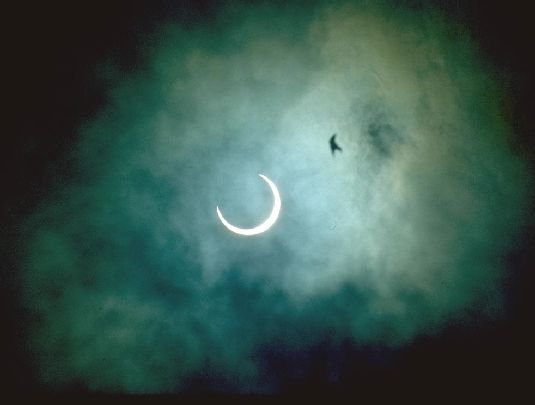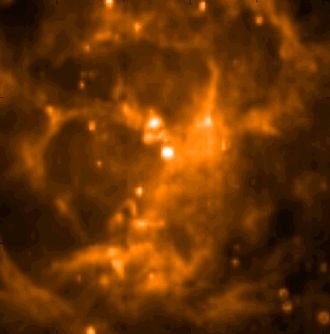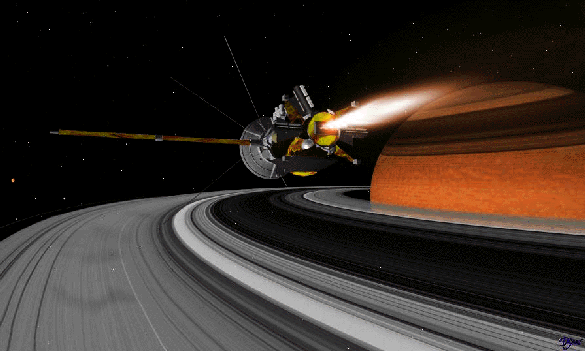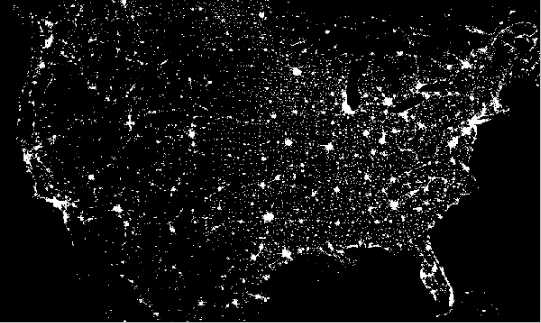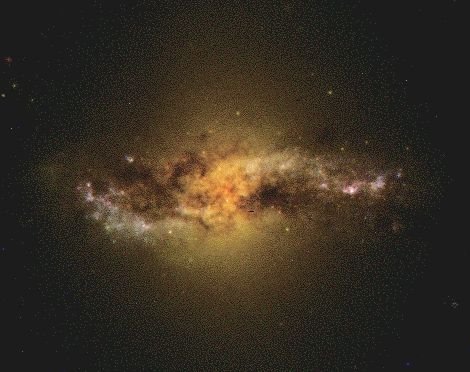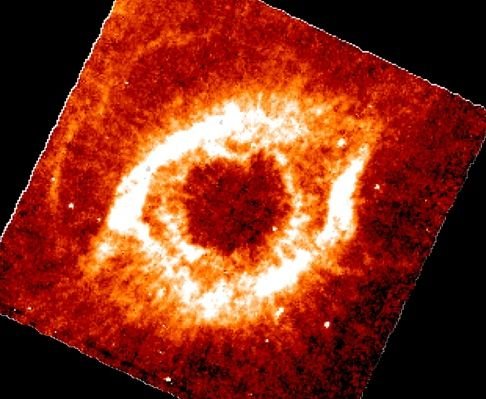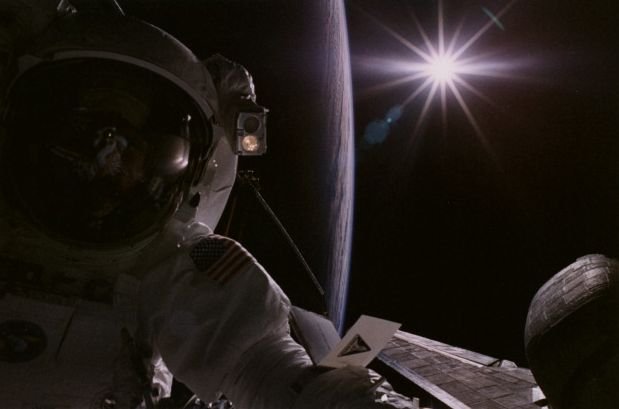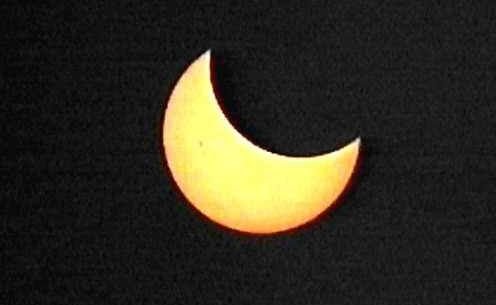NASA APOD #800-807
#800 A Fleeting Eclipse August 27, 1997
“A lunar eclipse can be viewed in a leisurely fashion. Visible to anyone on the night side of planet Earth (weather permitting), totality often lasts an hour or so as the moon glides through the Earth's shadow. But a solar eclipse is more fleeting. Totality can last a few minutes only for those fortunate enough to stand in the path of the Moon's shadow as it races across the Earth's surface. For the April 29, 1995 annular solar eclipse, photographer Olivier Staiger was standing in Macara, Ecuador under partially cloudy skies. Just before the maximum annular eclipse phase he recorded this dramatic moment as a bird flew near the sun. Very accurate predictions of eclipses have long been possible. The next solar eclipse will occur on September 2 and be visible from Australia, New Zealand, and Antarctica. The next lunar eclipse on September 16 will be visible from the Eastern Hemisphere."
Copyright: Olivier Staiger
#801 Infrared Trifid August 28, 1997
“The Trifid nebula (M20) is a bright star forming region in Sagittarius, 5000 light years from Earth. In visible light, the interstellar gas cloud is crossed by dark, obscuring dust lanes which roughly divide the glowing emission nebula into three major parts. But the Trifid nebula's well known appearance is dramatically reversed in this infrared view. At longer infrared wavelengths the dust lanes are brighter, radiating more energy than the gas. This image was recorded by the liquid helium cooled Infrared Space Observatory (ISO)."
Copyright: Public domain
#802 Cassini To Saturn August 29, 1997
“Scheduled for launch in October, the Cassini spacecraft will spend seven years traveling through the Solar System -- its destination, Saturn. On arrival Cassini will begin an ambitious mission of exploration which will include parachuting a probe to the surface of Titan, Saturn's largest moon. This artist's vision offers a dramatic view of Cassini's engine firing during the SOI (Saturn Orbit Insertion) maneuver as it passes above the ring plane. Before the development of the telescope, the gas giant Saturn was the most distant planet known to astronomers. Ten times farther from the Sun it receives only 1 percent of the sunlight that Earth does. Operating in this faint sunlight, the Cassini spacecraft can't use solar arrays so, like other missions to the outer Solar System, it will be powered by radioisotope thermoelectric generators (RTGs)."
Copyright: Public domain
#803 The United States at Night August 30, 1997
“This is what the United States of America looks like at night! Can you find your favorite US city on this image? Surprisingly, city lights make this task quite possible. The above picture is actually a composite of over 200 images made by satellites orbiting the Earth. Scans were made by the USAF Defense Meteorological Satellite Program (DMSP) Operational Linescan System. The DMSP satellites continue to help in the understanding and prediction of weather phenomena as well as provide key information about population patterns, city light levels, and even rural forest fires."
Copyright: NOAANGDCDMSP
#804 Arp 230: Two Spirals in One? August 31, 1997
“Is this one galaxy or two? Analysis of Arp 230 has shown evidence that this seemingly single spiral galaxy is actually the result of the recent collision of two spiral galaxies. The slow motion collision took place over about 100 million years and induced a burst of star formation that has begun to subside. The collision apparently had many similarities to the colliding galaxy sequence in the IMAX movie "Cosmic Voyage.""
Copyright: Public domain
#805 Infrared Helix September 01, 1997
“Five hundred light years from Earth, in the constellation Aquarius, a sun-like star is dying. Its last few thousand years have produced the Helix, a well studied and nearby example of a Planetary Nebula - typical of this final phase of stellar evolution. The emission in this Infrared Space Observatory image of the Helix nebula comes mostly from the expanding shells of molecular hydrogen gas. Dust, normally expected in such nebulae, should also radiate strongly at infrared wavelengths but mysteriously seems to be absent here. The culprit may may well be the Helix's central star, a contracting white dwarf. This small but extremely hot star radiates most of its energy at short Ultraviolet wavelengths and is invisible in this infrared mage. Astronomers suspect that over time, this intense Ultraviolet radiation may have destroyed the dust. The Sun is expected to go through its own Planetary Nebula phase ... in another 5 billion years."
Copyright: Public domain
#806 Dark Sky, Bright Sun September 02, 1997
“In low Earth orbit there is not enough atmosphere to diffuse and scatter sunlight, so shadows are black and the sky is dark - even when the Sun shines. The harsh lighting produced this dramatic effect as mission specialist Gregory Harbaugh photographed colleague Joseph Tanner during their second spacewalk to service the Hubble Space Telescope in February 1997. The aft section of the Space Shuttle Discovery is visible in the background with the Sun hanging over a delicate crescent of the Earth's limb. A checklist is attached to Tanner's left arm, and Harbaugh's reflection is just visible in Tanner's visor."
Copyright: Public domain
#807 A Partial Eclipse in Southern Skies September 03, 1997
“Location is everything, especially if you want to see a Solar Eclipse. These fleeting events are only visible to those in the path of the Moon's shadow as it races across the Earth. This path is usually less than 200 miles wide while covering only a fraction of a percent of the Earth's surface. And chances are, much of it will be over water. This view of the September 2nd eclipse was recorded by Olivier Staiger from Kingscote, Kangaroo Island, South Australia. He used a video camera equipped with a teleconverter and solar filter. This Solar Eclipse was a partial one, seen here near maximum for Staiger's location. The deepest eclipse - almost 90 percent of the Sun's surface was eclipsed by the Moon - was visible only from Antarctica. Want to see a total eclipse of the Sun? Locate yourself near the northern tip of South America on February 26, 1998."
Copyright: Olivier Staiger
Upvote! Resteem! Comment! As you like it! Thank you for attention!
